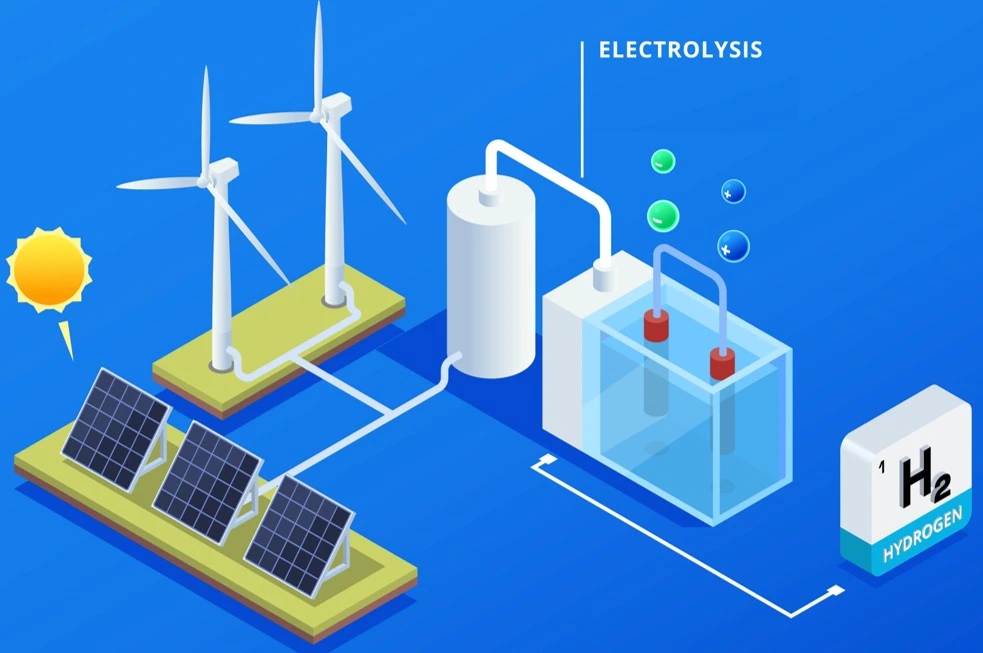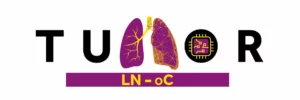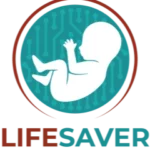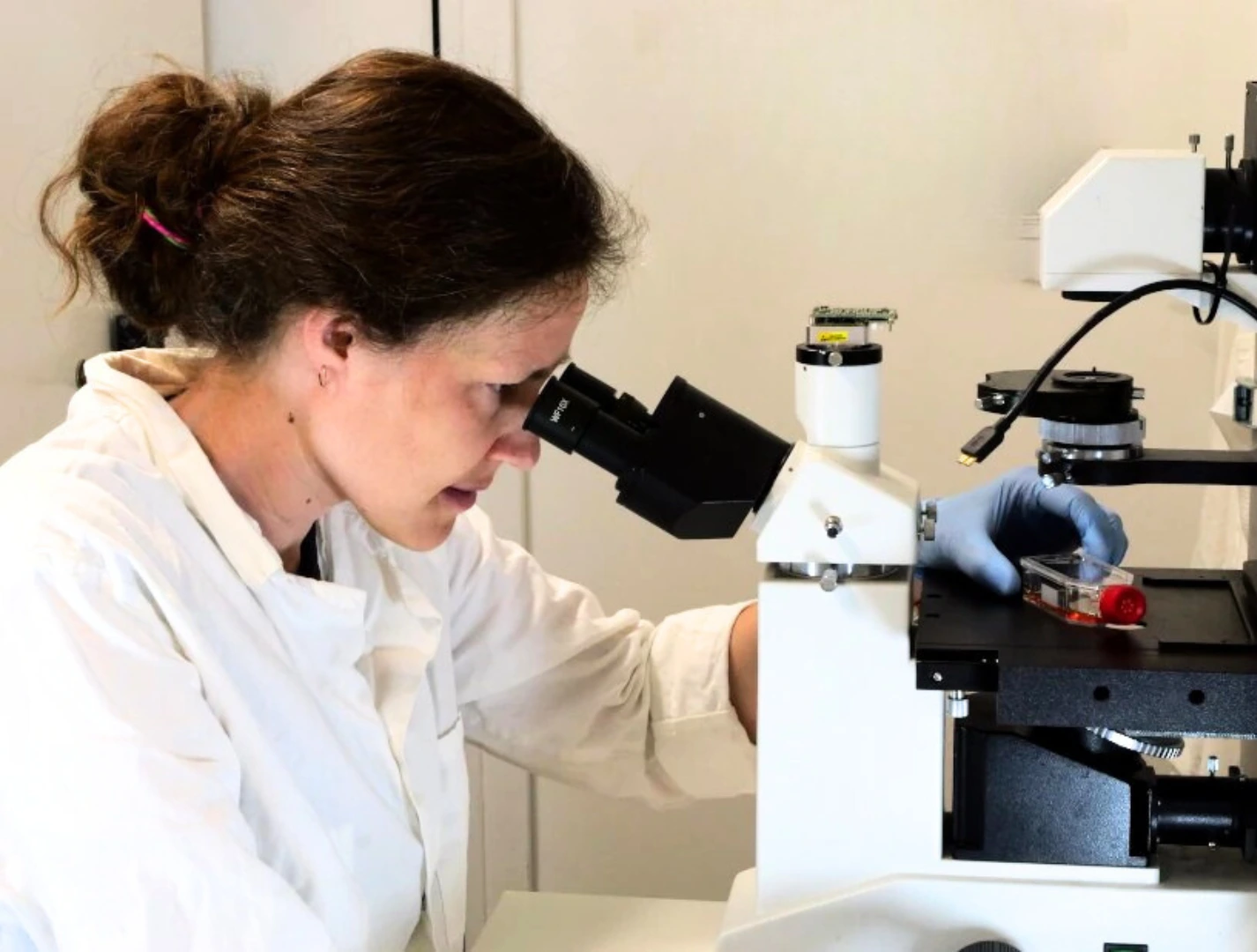Horizon Europe 2026/2027 best topics for "electrolysis"
Writer
Celeste Chidiac, PhD
Keywords
Microfluidic Devices, Intelligent Microfluidics, Artificial Intelligence, Machine Learning
Opening
Dec 2025, Jan/Aug/Sep/Dec 2026, Jan/Feb 2027
Deadline
Mar/Ap/Sep/Dec 2026, Feb/Mar/Sep/Oct 2027
Keywords
Intelligent Microfluidics
Deep Learning
Microfluidic Devices
Artificial Intelligence
Machine Learning
clean energy
renewable hydrogen
electrochemical processes
Your microfluidic SME partner for Horizon Europe!
We take care of microfluidic engineering, work on valorization and optimize the proposal with you
Horizon Europe 2026-2027
Calls Ordered by "electrolysis" relevance
We have categorized the most relevant topics from the Horizon Europe 2026‑2027 work programmes according to the impact that “electrolysis for renewable hydrogen and electrochemical processes” can have on the calls and related topics. We are sharing our analysis in case it can help you with project funding efforts. And, of course, if our microfluidics expertise can be of use to you as a partner, we would be delighted to discuss it further.

The relevance is indicated at the beginning of the topic in square brackets.
Discover more!
Calls ordered by “electrolysis for renewable hydrogen and electrochemical processes” relevance
[92%] HORIZON‑CID‑2026‑01‑02 – R&I IN SUPPORT OF THE CLEAN INDUSTRIAL DEAL: CLEAN TECHNOLOGIES FOR CLIMATE ACTION
- Type of Action: IA.
- Call: R&I in Support of the Clean Industrial Deal 2026
- Budget (M€): 150.00.
- Expected EU contribution per project (M€): 15.00 to 25.00.
- # projects: 8.
- Opening: 18 Dec 2025 – Deadline: 15 Sep 2026.
Scientific scope
Funds large-scale, near-market demonstrations that accelerate the roll‑out of clean industrial technologies across value chains. Supports scale-up, first-of-a-kind deployments, manufacturing capacities, and integration into industrial sites. The strategy emphasizes replicability and rapid emissions reduction, with strong exploitation and investment logic. Complements Net‑Zero priorities and leverages synergies with other EU instruments.
Why is this relevant for electrolysis
Electrolysis is a core clean technology for green hydrogen and power‑to‑X in hard-to-abate sectors. This topic can fund industrial pilots for high-throughput electrolyser manufacturing, BoP integration, and site-level deployment (e.g., refining, chemicals, steel) with bankable business cases. It also fits advanced stacks (PEM, AEM, SOEC), balance‑of‑plant, digital O&M, and lifetime/cost improvements critical to LCOH reduction.
[90%] HORIZON‑CID‑2027‑01‑02 – R&I IN SUPPORT OF THE CLEAN INDUSTRIAL DEAL: CLEAN TECHNOLOGIES FOR CLIMATE ACTION
- Type of Action: IA.
- Call: R&I in Support of the Clean Industrial Deal 2027
- Budget (M€): 140.00, # projects: 8.
- budget per project (€): €17,500,000.
- Opening: 12 Jan 2027 – Deadline: 15 Sep 2027.
Scientific scope
Continuation/expansion of the 2026 Clean Tech action: industrial‑scale demonstrations and manufacturing capacities for climate-neutral technologies with strong market take-up plans, investment leverage, and replicability.
Why relevant for electrolysis
Ideal for high‑TRL electrolysis manufacturing lines (e.g., gigafactory scale, low‑Ir PEM, durable AEM), process integration (H₂ for heat/feedstock), and digital twins for performance/Degradation mitigation- directly addressing cost, durability, and scale barriers to green hydrogen deployment.
[88%] HORIZON‑MISS‑2027‑04‑CIT‑02 – HYDROGEN CITIES
- Type of Action: CSA.
- Call: Missions 2027 – Climate‑neutral and Smart Cities
- Budget (M€): 5.00; # projects: 1.
- Opening: 09 Feb 2027 – Deadline: 07 Oct 2027.
Scientific scope
Supports a comprehensive, city‑scale approach to hydrogen ecosystems – planning, coordination, and enabling conditions for future demonstrations and investments (infrastructure, safety, skills, governance, replication).
Why relevant for electrolysis
Electrolyser projects benefit from city-level roadmaps, offtake aggregation (mobility, heat, industry), permitting and safety frameworks, and coordinated infrastructure (storage, refueling). This topic helps de-risk deployments and structure multi-stakeholder portfolios where municipal demand anchors green hydrogen production.
[82%] HORIZON‑CID‑2026‑01‑01 – R&I IN SUPPORT OF THE CLEAN INDUSTRIAL DEAL: DECARBONISATION OF ENERGY‑INTENSIVE INDUSTRIES
- Type of Action: IA.
- Call: R&I in Support of the Clean Industrial Deal 2026
- Budget (M€): 125.00; # projects: 8.
- budget per project (€): €15,625,000.
- Opening: 18 Dec 2025 – Deadline: 15 Sep 2026.
Scientific scope
Demonstrates deep decarbonization pathways in energy-intensive industries via fuel switch, electrification, clean hydrogen, CCUS, process innovations, and system integration with robust investment/exploitation logic.
Why relevant for electrolysis
Funds plant-level hydrogen substitution for heat/feedstocks and hybrid solutions (H₂ + electrified processes). Strong fit for coupling large electrolysers with industrial operations, including flexibility, waste‑heat recovery for SOEC, and OPEX‑cutting digital control.
[82%] HORIZON‑CID‑2027‑01‑01 – R&I IN SUPPORT OF THE CLEAN INDUSTRIAL DEAL: DECARBONISATION OF ENERGY‑INTENSIVE INDUSTRIES
- Type of Action: IA.
- Call: R&I in Support of the Clean Industrial Deal 2027
- Budget (M€): 125.00; # projects: 8.
- budget per project (€): €15,625,000.
- Opening: 12 Jan 2027 – Deadline: 15 Sep 2027.
Scientific scope
As above, focused on high-impact decarbonization demos in EIIs with strong potential for replication and rapid industrial uptake.
Why relevant for electrolysis
Backs large-scale hydrogen integration (direct reduction, ammonia, refineries), addressing integration, CAPEX/OPEX, and operational flexibility – key to bankable electrolysis in EIIs.
[80%] HORIZON‑CL4‑2027‑01‑MATERIALS‑PRODUCTION‑22 – INNOVATIVE ADVANCED MATERIALS AND NEW PRODUCTION PROCESSES – REDUCING DEPENDENCIES ON CRITICAL AND STRATEGIC RAW MATERIALS
- Type of Action: IA.
- Call: INDUSTRY 2027
- Budget (M€): 36.00; # projects: 6.
- budget per project (€): €6,000,000.
- Opening: 22 Sep 2026 – Deadline: 02 Feb 2027.
Scientific scope
Targets substitution or substantially reduced use of critical/strategic raw materials through safe‑and‑sustainable‑by‑design innovative materials and processes, achieving TRL5→7 with strong business cases.
Why relevant for electrolysis
PEM electrolysers depend on scarce Ir/Ru/Pt; AEM/SOEC have critical components. This topic supports new catalysts, coatings, membranes, and stack materials that cut CRM content and cost, improving durability and EU supply resilience.
[78%] HORIZON‑CL4‑2026‑01‑MATERIALS‑PRODUCTION‑01 – ADVANCED MANUFACTURING FOR KEY PRODUCTS (MADE IN EUROPE PARTNERSHIP)
- Type of Action: IA.
- Call: INDUSTRY 2026
- Budget (M€): 37.50; # projects: 6.
- budget per project (€): €6,250,000.
- Opening: 06 Jan 2026 – Deadline: 21 Apr 2026.
Scientific scope
Supports advanced manufacturing solutions for strategic products in Europe, including scaling production lines, automation, and quality‑by‑design approaches aligned with industrial partnerships.
Why relevant for electrolysis
Direct fit for mass‑manufacturable electrolyser stacks/modules and BoP (power electronics, compressors, separators), in‑line QC/NDT, yield improvement, and factory digitalization to lower €/kW and ramp volumes.
[76%] HORIZON‑CL4‑2027‑01‑MATERIALS‑PRODUCTION‑02 – ADVANCED MANUFACTURING FOR KEY PRODUCTS (MADE IN EUROPE PARTNERSHIP)
- Type of Action: IA.
- Call: INDUSTRY 2027
- Budget (M€): 36.00; # projects: 6.
- budget per project (€): €6,000,000.
- Opening: 22 Sep 2026 – Deadline: 02 Feb 2027.
Scientific scope
As above, with emphasis on robust industrialization, automation, metrology, and supply‑chain readiness.
Why relevant for electrolysis
Enables factory-scale improvements for PEM/AEM/SOEC, including stack assembly automation, membrane/electrode coating, micro-patterning of flow-fields, and quality analytics.
[75%] HORIZON‑CL5‑2026‑11‑D3‑04 – DE‑RISKING RENEWABLE FUEL TECHNOLOGIES THROUGH TRANSNATIONAL PRE‑COMMERCIAL PROCUREMENT OF RENEWABLE FUEL INDUSTRIAL VALUE CHAINS
- Type of Action: PCP.
- Call: Cluster 5 Call 11‑2026
- Budget (M€): 40.00; # projects: 1.
- Opening: 04 Aug 2026 – Deadline: 01 Dec 2026.
Scientific scope
Joint PCP by public buyers to de-risk renewable fuel technologies across the value chain. Focus on procurement-driven R&I to address performance, cost, and integration barriers.
Why relevant for electrolysis
“Renewable fuels” covers RFNBOs – including H₂. This purchasing‑power instrument can fund pre-commercial development/testing of electrolyser systems, H₂ logistics and integration, creating market pull for innovative solutions.
[74%] HORIZON‑CL4‑2027‑02‑MATERIALS‑PRODUCTION‑32 – EFFICIENT ENERGY INPUT FROM RENEWABLE SOURCES AND ENERGY MANAGEMENT IN THE PROCESS INDUSTRIES
- Type of Action: IA (two‑stage call).
- Call: INDUSTRY‑two‑stage 2027
- Opening: 22 Sep 2026; 1st stage: 02 Feb 2027; 2nd stage: 02 Sep 2027.
- Budget (M€): 60.00; # projects: 8.
- budget per project (€): €7,500,000.
Scientific scope
Targets integration of renewable energy (heat/electricity) and advanced energy management in process industries, with strong industry‑partnership anchoring.
Why relevant for electrolysis
Large electrolysers need low-cost renewable power and smart control. This topic supports site-level energy integration, hybridization (e.g., SOEC + waste heat), and supervisory control to cut LCOH via higher capacity factor and grid-friendly operation.
[72%] HORIZON‑CL4‑2026‑01‑MATERIALS‑PRODUCTION‑31 – EFFICIENT CAPTURE / PURIFICATION / UTILISATION OF CO₂ FOR THE PRODUCTION OF COMPETITIVE PRODUCTS (PROCESSES4PLANET PARTNERSHIP)
- Type of Action: RIA.
- Call: INDUSTRY 2026 (HORIZON‑CL4‑2026‑01).
- Budget (M€): 51.00; # projects: 9.
- budget per project (€): €5,666,667.
- Opening: 06 Jan 2026 – Deadline: 21 Apr 2026.
Scientific scope
Advances in integrated CO₂ capture/purification and utilization routes to competitive products, improving efficiency, quality, and techno-economic viability in process industries.
Why relevant for electrolysis
Electrochemical CO₂ conversion (e‑fuels/chemicals) is electrolyser‑adjacent. Topic can fund electrocatalyst/membrane development, electrolyser‑reactor coupling, and process intensification that leverage green H₂ for carbon utilization.
[70%] HORIZON‑CL5‑2027‑02‑D3‑09 – CO‑FUNDING STRATEGIC ENERGY TECHNOLOGY (SET) PLAN RENEWABLE FUEL VALUE CHAINS AT EU, NATIONAL, REGIONAL, AND LOCAL LEVEL
- Type of Action: COFUND.
- Budget (M€): 30.00; # projects: 1.
- Opening: 03 Dec 2026 – Deadline: 31 Mar 2027.
Scientific scope
Co‑funds aligned programmes on renewable fuel value chains under the SET‑Plan, strengthening multi‑level governance and investment leverage.
Why relevant for electrolysis
Mobilizes national/regional funds with EU support – ideal to finance coordinated pipelines of hydrogen (electrolysis) pilots, offtake schemes, and enabling infrastructure.
[68%] HORIZON‑CL4‑2026‑01‑MATERIALS‑PRODUCTION‑23 – ACCELERATING THE DISCOVERY AND DEVELOPMENT OF CHEMICALS AND INNOVATIVE ADVANCED MATERIALS THROUGH DIGITALISATION AND ARTIFICIAL INTELLIGENCE (IAM PARTNERSHIP)
- Type of Action: IA.
- Call: INDUSTRY 2026
- Budget (M€): 51.00; # projects: 4.
- budget per project (€): €12,750,000.
- Opening: 06 Jan 2026 – Deadline: 21 Apr 2026.
Scientific scope
Accelerates materials/chemicals development via AI-driven workflows and digital twins – from design to validation – under the IAM partnership.
Why relevant for electrolysis
Applies directly to electrocatalysts, ionomers, membranes, and anti-degradation coatings; enables high-throughput discovery/optimization and physics-informed scale-up of components that govern efficiency and lifetime.
[66%] HORIZON‑CL5‑2026‑03‑D3‑22 – NOVEL SOLUTIONS FOR OFF-GRID STORAGE OF RENEWABLE ENERGY FOR CRITICAL INFRASTRUCTURES
- Type of Action: RIA
- Opening: 18 Dec 2025 – Deadline: 31 Mar 2026.
- Budget (M€): 12.00; # projects: 3.
- budget per project (€): €4,000,000.
Scientific scope
Develops innovative off‑grid storage/energy systems for critical infrastructures, improving resilience and operability with high shares of renewables.
Why relevant for electrolysis
Supports remote/behind-the-meter renewable‑to‑hydrogen schemes (electrolyser + storage + control), islanded operation, and black‑start capabilities – key for mining sites, ports, and industrial estates.
[60%] HORIZON‑CL5‑2026‑03‑D3‑19 – GRID‑FORMING CAPABILITIES FOR MORE RESILIENT AND RES‑BASED ELECTRICITY GRIDS
- Type of Action: IA.
- Opening: 18 Dec 2025 – Deadline: 31 Mar 2026.
- Budget (M€): 20.00; # projects: 2.
Scientific scope
Demonstrates grid-forming technologies and control schemes, enhancing stability with high penetration of inverter-based resources.
Why relevant for electrolysis
Large electrolysers are power‑electronics-intensive loads. Grid-forming advances help connect MW-scale plants, mitigate disturbances, and enable demand-side services (primary reserve, synthetic inertia) that monetize flexibility.
[58%] HORIZON‑CL5‑2026‑03‑D3‑21 – HYBRID AI‑CONTROL FRAMEWORK FOR A NEXT‑GENERATION GRID‑SCALE ENERGY STORAGE AND SYSTEM INTEGRATION
- Type of Action: IA.
- Opening: 18 Dec 2025 – Deadline: 31 Mar 2026.
- Budget (M€): 14.00; # projects: 2.
Scientific scope
Develops/validates hybrid AI control for grid-scale storage and energy system integration, enhancing predictability and system services.
Why relevant for electrolysis
AI control can optimize electrolyser dispatch with renewables and markets, reduce cycling degradation, and coordinate H₂ production with storage and loads for best LCOH.
[56%] HORIZON‑CL4‑2026‑01‑MATERIALS‑PRODUCTION‑14 – IMPROVING AVAILABILITY OF SECONDARY RAW MATERIALS THROUGH RECYCLING
- Type of Action: IA.
- Call: INDUSTRY 2026 (HORIZON‑CL4‑2026‑01).
- Budget (M€): 28.00; # projects: 4.
- Opening: 06 Jan 2026 – Deadline: 21 Apr 2026.
Scientific scope
Boosts secondary raw materials availability via innovative recycling routes and system integration.
Why relevant for electrolysis
Supports recovery of platinum‑group metals, Ni, Co, and other strategic materials from spent stacks/electrodes – reducing CRM risks and enabling circular business models for electrolysis manufacturers.
[55%] HORIZON‑CL4‑2026‑01‑MATERIALS‑PRODUCTION‑12 – TECHNOLOGIES FOR INNOVATIVE EXTRACTION OF CRITICAL RAW MATERIALS
- Type of Action: RIA.
- Call: INDUSTRY 2026 (HORIZON‑CL4‑2026‑01).
- Budget (M€): 19.00; # projects: 3.
- budget per project (€): €6,333,333.
- Opening: 06 Jan 2026 – Deadline: 21 Apr 2026.
Scientific scope
Develops innovative extraction technologies for CRMs, improving environmental performance and security of supply.
Why relevant for electrolysis
Addresses supply‑chain bottlenecks (e.g., Ir, Pt, Ni) needed for catalysts and cell components, stabilizing costs and enabling European manufacturing scale‑up.
[52%] HORIZON‑CL5‑2026‑05‑D5‑11 – SCALABILITY OF SOLID OXIDE FUEL CELLS FOR WATERBORNE TRANSPORT (ZEWT & CLEAN HYDROGEN JU)
- Type of Action: RIA.
- Opening: 18 Dec 2025 – Deadline: 14 Apr 2026.
- Budget (M€): 16.00; # projects: 2.
- Scope note: The topic text explicitly mentions operation with hydrogen and its derivatives and will be transferred to the Clean Hydrogen JU WP.
Scientific scope
Scale SOFC stacks/modules with improved performance, reliability, and durability; develop testing/diagnostic protocols and control, assess operation with H₂/ammonia/methanol, and advance manufacturing processes.
Why relevant for electrolysis
SOFC/SOEC platforms share materials and manufacturing. Advances in SOFC stack durability, control, and manufacturing can translate to reversible SOEC/E‑fuels systems and enable maritime hydrogen ecosystems.
[50%] HORIZON‑CL5‑2027‑02‑D3‑31 – ADVANCEMENTS IN DIRECT AIR CAPTURE
- Type of Action: IA.
- Opening: 03 Dec 2026 – Deadline: 31 Mar 2027.
- Budget (M€): 17.00; Estimated # projects: 2.
Scientific scope
Funds large-scale operational validation of DAC concepts to capture CO₂ efficiently and cost-effectively.
Why relevant for electrolysis
Electrochemical DAC and e-fuel pathways couple naturally with green hydrogen. Projects can integrate H₂ production and DAC to deliver synthetic fuels/chemicals with verifiable carbon balances.
What microfluidics can bring to electrolysis
- High‑throughput screening of electrocatalysts (PEM/AEM/SOEC) in micro‑cells with precise control of mass transport and local pH.
- Bubble dynamics control and two-phase flow management to reduce ohmic losses and improve gas removal from porous electrodes.
- Rapid durability and accelerated‑stress testing (AST) under well-defined gradients of temperature, humidity, and current density.
- Micro-patterned flow‑fields and channel architectures to optimize pressure drop, water management, and reactant utilization.
- In‑situ diagnostic sensors (pressure, impedance, optical) embedded in micro‑reactors for real-time degradation mapping.
- Membrane and ionomer screening (conductivity, crossover, swelling) using chip-based diffusion/permeation rigs.
- Lab‑on‑chip electrosynthesis for CO₂RR/N₂RR product quantification and selectivity maps at low reagent volumes.
- Scale‑down replicas of full cells/stacks for fast design‑of‑experiments (DoE) and ML-ready datasets.
- Thermal management studies (micro‑calorimetry) to quantify heat generation and SOEC thermal transients.
- Micro‑structured electrodes (e.g., templated foams, nano‑channels) to raise ECSA and sustain higher current densities.
The MIC already brings its expertise in microfluidics to Horizon Europe:
H2020-NMBP-TR-IND-2020

Microfluidic platform to study the interaction of cancer cells with lymphatic tissue
H2020-LC-GD-2020-3

Toxicology assessment of pharmaceutical products on a placenta-on-chip model
FAQ – Horizon Europe 2026-2027: Best Topics for Electrolysis
Which types of electrolyser topics are prevalent in the 2026-2027 Work Programme?
A relatively consistent triumvirate (i) materials and stack breakthrough (catalysts with drastically reduced Ir/Ru/Pt loading; resilient AEM/PEM membranes; robust SOEC cells), (ii) manufacturing and quality (automated stack assembly, on-line metrology, yield and throughput on gigawatt paths), (iii) system integration and operations (dynamic operation with high-renewables grids, pressurized operation, water management, safety). These are divided into RIA for high-novelty science and IA for pilot-scale demonstrations using industry assets.
Is it PEM, alkaline, AEM, and SOEC?
Yes. PEM and alkaline are the workhorses for near-term capacity; AEM is appealing for low-critical-metal routes; and SOEC offers high-efficiency hydrogen with industrial waste heat or high-temperature steam. Cross-learning (e.g., PEM/AEM coating processes applied to SOEC electrodes, or alkaline BOP simplification borrowed from PEM) is generally well received by evaluators.
What are the expected results at the end of the project?
In the case of RIA: measured progress such as ≥50% reduction in noble-metal loading, ≥2000 hours of durability at target current densities with <2%/1,000 h performance degradation, documented cost and LCA baseline, and reproduced protocols.
In case of IA: bankable evidence, MW-class stacks or multi-stack pilots, availability (>95%), start/stop cycling compatible with wind/solar, specific improvements in energy consumption (e.g. towards 50-54 kWh/kg H2 at system level in the case of PEM/alkaline under realistic conditions), therefore, full safety case, and clarity of certification/readiness to offtake.
What do you consider the best proposal niches of 2026-2027?
Reviewers and programme text prioritise four spaces again and again:
- Critical-metal lean PEM (Ir consumption reduced through gradient electrodes, ultra-thin layers of anode or non-noble bifunctional supports).
- Industrialised AEM (lasting membranes, control of carbonate, free operation of the process, and independence of caustic).
- SOEC to hard-to-abate industries (co-electrolysis, dynamic thermal management, stack lifetime in response to frequent load swings).
- Ready to manufacture gigafactories (inline control of coating/thickness, defect mapping, accelerated stress testing control between materials-stack-system).
What are the treatments for water and brine problems?
Projects are pushed to operate outside ultrapure deionised water; they can tolerate realistic water conditions, can be pretreated with low-energy methods, and can operate safely around offshore or industrial locations. Pretreatment-free seawater electrolysis is not recommended; rather, any calls tend to focus on demineralisation + electrolysis where foulings, scaling, and corrosion have been quantified.
Connecting with renewables and grids?
One request is recurring, quick, efficient turndown rate and ramp rates that would go hand in hand with variable RES. Anticipate KPIs of minimum loading (less than 10-20%), start-up (seconds to minutes), and degradation during cycling and participation in ancillary services. Projects that add digital twins, predictive maintenance, and energy scheduling are more likely to deliver better impact.
What are the common cross-cutting requirements that are not delivered well?
Full LCA sustainability with a worker-safety plan.
- Data architecture and traceability: process data, stack genealogy, and a harmonised test book to ensure results are consistent.
- Recycling and circularity: membrane, catalyst, and BOP recycling and reuse- preferably at pilot scale.
- Standardised testing: common duty cycles are used in dynamic operation, and the comparisons are useful.
How much money should we expect per topic and project?
For electrolysis in 2026-2027, envelope costs are expected to be in the €20-80M per topic and €4-20M per project ranges, depending on whether it is an RIA or an IA with large pilots. Several of these IA demonstrations with MW-scale stacks are priced at 8-15M, while materials-intensive RIAs are priced at 4-8M.
What impact can microfluidics have on electrolyser R&I that can be measured?
Microfluidics is useful where the traditional ones are slow or blind:
- Catalyst ink screening at scale (dozens–hundreds of compositions/day), mapping viscosity, dispersion, porosity, and resulting overpotentials.
- To minimise mass transfer loss and ohmic drop at high current densities, bubble management is studied using on-chip visualisation.
- Gradient electrodes and gradient membranes through micro-patterned coating, which allows ultra-low utilisation of Ir or Ru without a collapse in performance.
- Early delamination, crossover, and hot spot detection Operando diagnostics (optical/IR/pressure microsensors).
- Pre-pilot derisking of brine/pretreatment by corrosion and fouling micro-reactors.
- ICQ modules of thickness, porosity, and defect mapping, which fit on roll-to-roll lines.
These are easily mapped to RIAs (methods/materials) and IAs (yield, uptime, safety), and the iteration cycles are reduced by an order of magnitude.
Does it have any realistic schedule alerts to plan with?
Opportunities and deadlines are concentrated in December-June, with spring/autumn bankruptcies in 2026 and 2027. The two-stage calls usually exhibit a pattern of opening in December – March/April, followed by a September/October full proposal. Single-stage IA lines are opened in late spring and closed early in the fall. You need to build your internal drafting so that you can be finished 6-8 weeks before the EC deadline, allowing consortium iteration and compliance checks.
What pattern of consortium is reliably good?
A small team, with a fully developed value-chain:
- Industrial anchors (Stack OEMs, EPCs, offtakers) that administer sites and assets.
- Experts in the method (membranes, coatings, safety, grid codes, digital twins, LCA /SSbD, recycling).
- A microfluidics SME, which is in charge of high-throughput screening, inline metrology, and process intensification.
- Test and certification bodies to seal compliance at an early stage.
Based on practice within Horizon proposals, the addition of a specialised SME that combines engineering with proposal architecture is likely to increase the official success probability by about twice as much, primarily because risks, KPIs, and validation tracks become tangible rather than hypothetical.



